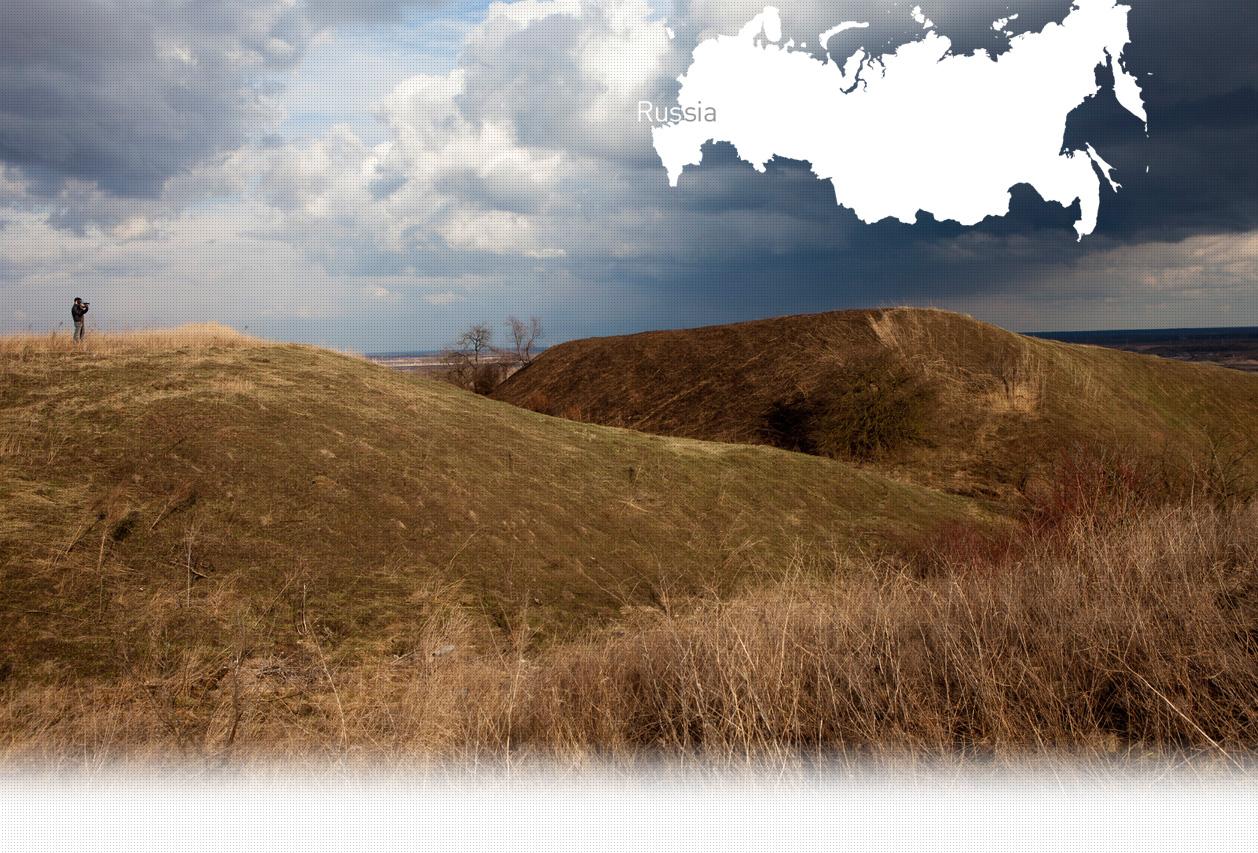

2 Killing site(s)
Mariia R., born in 1937, recalls: “The clay quarries were located in the center of the hamlet. A gas truck arrived there in the evening. The children were chased away by a German with a whip, but I hid in a ravine and saw everything. Two Germans made Jewish women and children go down into the deepest pits. The drivers remained in the cabin. Three Jewish men were kept alive to cover the pit, and when their job was done they were also pushed into the pit. Then, the Germans fired a few salvos over the covered pit. It happened in summer. I told my mother what I had seen and at night other local people and my mother went to the clay quarry and buried the Jews.” (Testimony n°716, interviewed in Bezopasnoye on May 19th, 2017)
“In September 1942, the German executioners gathered 161 Jews on the outskirts of the Bezopasnoye village. After having humiliated and mistreated them for a long time, they forced the victims to strip naked without paying any attention to the women’s and children’s cries. Then, they were shot with machine guns. After they threw the bodies into a deep ravine and covered them with a thin layer of soil.” [Act drawn up by the State Extraordinary Commission on July 30th, 1943; RG 22.002M; 7021-17-12]
Bezopasnoye is located 72 km north of Stavropol. The settlement was founded in 1804. According to the census in 1896 9,014 people lived in the village. By 1925 the population increased up to 13,804 people. By that time there were three party organizations, 4 schools, 2 reading clubs, 1 orphanage, 8 smithies, 8 mills. In 1930 more than 40 small kolkhozes operated in Bezopasnoye but they were united in one the same year. There were no Jews in Bezopasnoye before the war. The Jewish refugees started to arrive in July-August 1941, when the Soviet Union was invaded by the Germans. From the Soviet archives we know that 529 Jews arrived to the village among 1,004 refugees. Among the Jewish refugees there were Jews from Kyiv. Most of the Jews managed to evacuate further leaving behind those who didn’t have any means to evacuate.
Bezopasnoye was occupied by the German forces on August 2nd, 1942. According to the historical resources and local villagers, interviewed by Yahad’s team, several executions of Jewish refugees took place in Bezopasnoye. About a month after the occupation a part of the Jewish refugees was confined in the village’s warehouse. After they were loaded onto the gas van and taken to the clay pit. There, the gassed victims were buried; some of the victims were buried alive. Another group of about 160 people was confined in the village’s Klub. They were taken to another clay pit by a gas van but they weren’t gassed. On the site the victims had to go down inside the pit where they were shot dead. During the second execution 161 were killed, the majority of whom were from Kyiv. The number of the Jews murdered during the first execution remains unknown.
Do you have additional information regarding a village that you would like to share with Yahad ?
Please contact us at contact@yahadinunum.org
or by calling Yahad – In Unum at +33 (0) 1 53 20 13 17